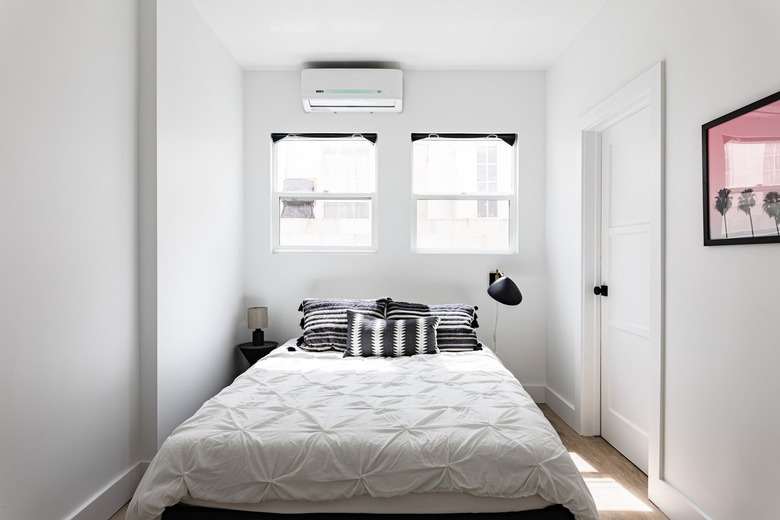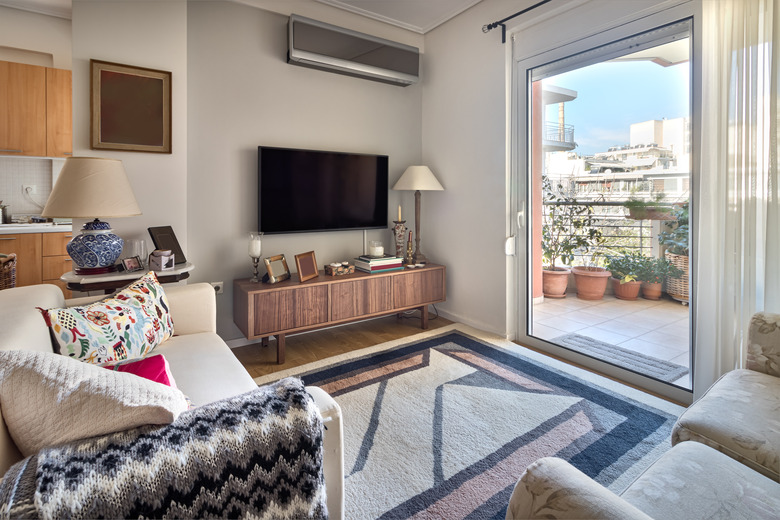Ductless Minisplit: DIY Troubleshooting
We may receive a commission on purchases made from links.
Take the compressor and condenser coil out of your refrigerator and put them outside, connect them to the evaporator coils with some tubing, add a couple of fans, put the refrigerator's thermostat on the wall and you'd have something close to a ductless minisplit air conditioner. Now, add a valve that can reverse the flow of refrigerant between the coils and you'd have a ductless minisplit heat pump that's capable of both cooling and heating your house. Real ductless minisplits have more sophisticated wiring and controls than refrigerators, but the basic principle of operation is the same.
If you have a ductless minisplit system — which can actually incorporate more than one indoor unit (four is the recommended limit, but some systems have eight) — the refrigerator analogy can be useful when it comes to troubleshooting. More than one common problem can be traced to issues with the refrigeration system, and you have to refer issues like a refrigerant leak or a compressor malfunction to a certified HVAC technician. That still leaves plenty of things you can troubleshoot yourself, and the job may be easy because the problem is often a minor one, such as a tripped breaker or dirt on the coil.
Ductless Minisplit Troubleshooting Overview
Ductless Minisplit Troubleshooting Overview
Unlike conventional forced-air HVAC systems, a ductless minisplit system has no ducts, so you can rule out ductwork leaks and vent obstructions when your minisplit system doesn't provide enough hot air or cool air. A typical system consists of an outdoor unit and one or more indoor units connected by tubing and wires that pass through the wall, and instead of a central air handler, each indoor unit has its own blower.
If your system has more than one indoor unit and one of them is malfunctioning while the others are working normally, you can almost certainly trace the problem to that particular indoor unit, and it's often an electrical problem, a dirty coil or a clogged air filter. If, on the other hand, all the indoor units are malfunctioning, the culprit is usually the outdoor unit, and that's where you should look first. Even if you have just one indoor unit, it's worth starting your troubleshooting with the outdoor unit because that's where most problems start.
The outdoor unit is typically found right next to the house, often on the other side of the wall on which the main indoor unit is mounted, and it's hard to miss. It's a largish metal box with grilles and louvers that provide airflow, and it contains the compressor that makes the heating and cooling happen. The compressor and coil in the outdoor unit need the air to function properly, so if this box gets covered by leaves, sticks, snow or other debris, clearing the debris may resolve any problems you're having.
Problem: The System Won't Come On
Problem: The System Won't Come On
Before you freak out about the failure of your ductless heating system to cycle on, check the thermostat settings, particularly the button or toggle that switches between heating and cooling modes. This seems obvious, but HVAC pros report that a common problem is people forgetting to do this, and they call for service when they don't need it. The button controls the system's reversing valve, and if it's in the cooling position, it won't signal the system to turn on until the temperature rises, which it won't do when it's cold outside.
The other common cause for the failure of a ductless minisplit system to turn on is that the circuit breaker in the main service panel (breaker box) has tripped. If the system stays off after you reset the breaker, look for a tripped GFCI outlet somewhere in the house. Ductless minisplit systems are often plugged into a wall outlet, and that outlet or another one on the same circuit may have tripped when the breaker did. You can also test the outlet by plugging in a working light or appliance. If it doesn't work, you need an electrician to look at your electrical system. If it does work, you need an HVAC technician to service your ductless minisplit system.
Problem: Hot Air Isn't Really Hot
Problem: Hot Air Isn't Really Hot
A heat pump works by transferring heat from outdoors to indoors, and it doesn't work well in very cold weather when there isn't much heat to transfer. If you use a heat pump in a cold climate, you should install an optional drain pan heater in the outdoor unit to provide extra heat for the coil on cold days. On the other hand, the failure of a system to blow hot air when the outside temperatures are moderate is often due to the coil being iced over.
The ice buildup comes from condensate that settles on the coil and freezes. Most systems go into a defrost cycle by periodically reversing from heating mode to cooling mode to make the outside coil heat up, but if the buildup is too great, the defrost cycle may not get rid of all of it. You can troubleshoot this by switching the system to cooling mode yourself, setting the thermostat target temperature below room temperature and letting the system run until the ice is gone. You can also manually de-ice the coil by spraying it with a garden hose after turning off the breaker, but never try to chip off the ice with a sharp object or you'll probably damage the coil.
If the coil ices over repeatedly, there may be too little airflow in the outdoor unit, and you may be able to correct that by cleaning or changing the air filter in the outdoor unit or cleaning the coil with a coil brush. If that doesn't help, the problem may be a lack of refrigerant, and for that, you need to call an HVAC pro.
Problem: Water Dripping From Indoor Unit
Problem: Water Dripping From Indoor Unit
When a ductless minisplit system is running as an AC unit, the indoor coil gets cold and collects condensate that has to drain. Like any air conditioning unit, the indoor unit has a drain line to collect this condensate and direct it outdoors, and if the unit is dripping, it's usually because the drain line is blocked. You can often clear it yourself by pouring vinegar through it, but if that doesn't work, it may be kinked, and unkinking it is a job for a pro. It's also possible that the unit wasn't installed with the correct slope toward the outside of the building, and a service pro can reinstall it.
Problem: System Runs Erratically
Problem: System Runs Erratically
The indoor and outdoor units communicate through wires bundled with the tubing that passes through the walls, and problems arise when they are loose, if they are the wrong gauge or if they have been installed improperly. You may notice that the unit works in some modes but not others or that the outdoor unit comes on but the indoor unit does not. You may also see error codes on the control panel, and you may hear loud noises from the compressor because it isn't getting a steady signal.
Ductless minisplit systems have specific wiring requirements that often call for 18- or 14-gauge stranded wire. Stranded wire isn't as common as solid wire, and an inexperienced installer may have used the wrong type. The solution is to have an electrician or HVAC pro rewire the system with the proper wire.

